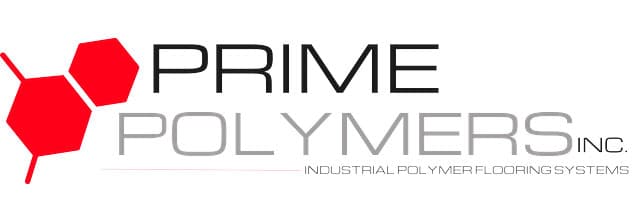Epoxy Flooring Care and Maintenance
Epoxy floors can vary from a few mils (1/1,000 of an inch) to a quarter inch (250 mils). The thicker floors are generally aggregate filled reducing the amount of epoxy coating required while increasing the compression strength, impact resistance, scratch resistance, and durability.
Considerations typically taken into account when specifying or purchasing epoxy flooring are the customer’s needs (non-skid, ultra-violet resistance, stain resistance, scratch resistance). We also consider budget, time frame for installation, and longevity. Most importantly, we meet the customers’ expectations of what the floor coating will look like when it is new and several years later.
It is difficult for a material supplier or contractor to define the lifetime or longevity of an epoxy floor surface. There are numerous factors that can and do affect the lifetime of a floor. Several of these are:
- Type of traffic – foot versus forklift.
- Abuse – dragging of skids, palletainers, coils, etc.
- Impact – dropping of tools, parts, etc.
- Chemical exposure.
- Cleanliness of plant – metal parts or chips, stones or debris on floor.
- Type of cleaner / scrubber brushes used.
When the epoxy floor coating is new, it is very important that the end-user find out what type of floor cleaner is recommended. The different types of epoxy systems will take varying time frames to reach full cure with the properties listed in Material Sheets. Some typical time frames are:
Epoxy coatings – 7 to 10 days
Urethane coating – 21 to 28 days
Waterborne coating – 7 to 10 days
Vinyl ester – 5 to 7 days.
Epoxy floor coatings will withstand foot or forklift traffic, but may not have resistance to chemicals and in some cases water. It is advised that you consult with the material supplier on when you can expose the flooring surface to chemicals, and when you can clean the epoxy finish.
Chemical Resistance and Exposures
Most suppliers’ Product Sheets list chemical resistance. It is important that you review the chemical resistance charts on these Product Sheets. There are varying degrees of exposure that epoxy floors will withstand. Some products will take complete immersion in the harsh chemicals and have no effect. Others may list immediate clean up of the spill to minimize chemical attack. No drums or containers should be stored directly on the epoxy surface. Any spills or leaks may penetrate under the containers and sit there for weeks before they are noticed. This will probably result in complete failure of the epoxy flooring material.
Cleaners and Scrubbers
There are different types of cleaners available. The function of a cleaner is to solubilize the dirt, oils or chemicals so they can be removed from the floor. The function of a scrubber is to mix the diluted cleaning solution and dirt / oil and then remove the mixture. If the correct type of cleaner is utilized, you will be able to use a very soft bristle or moderately abrasive scrubbing pad on your scrubber. A solvated urethane is typically about 60% solids and is applied at 5 to 6 wet mils. That means there are only 3 to 4 dry mils on the floor. If a very stiff or aggressive pad is used, the urethane will be worn from the floor in several months to a year.
Food fats typically require a saponifying type of cleaner. Industrial hydrocarbon oils will require an emulsifying type cleaner. The recommendations for the use of the cleaner must be followed. If the recommended procedure is to dilute the cleaner with 20 to 30 parts with water, this should be followed. The use of the cleaner diluted less than the recommended amount will typically leave a soap scum, making the floor appear dirty and dull. The personnel cleaning the floor will then clean the floor again using stronger cleaners and pads or brushes that are too stiff. Remember – the cleaner should do the work to remove the dirt /oil, not the scrubbing brushes or pads.
Some cleaners contain solvents. These solvents may be listed as co-solvents. Cleaners containing co-solvents are typically multi-purpose (food and hydrocarbon oil) cleaners. The co-solvent is required to allow the cleaner to mix with different types of oil. These co-solvents can attack the epoxy coating. They typically soften the epoxy, allowing it to be stained or removed. A test area should always be done with a cleaner before cleaning a large area.
Spot Patching
Water can cause de-lamination of epoxy flooring. Scratches and deep gouges should be repaired as soon as possible. Water will penetrate into the concrete on deep scratches causing dis-bondment of the epoxy flooring, thus increasing the size of the scratches. Sand filled epoxies are much less likely to be dis-bonded by water, as most scratches will not penetrate the sand filled epoxy.
Most material suppliers list a volume mix ratio of their materials. Small scratches should be lightly sanded and taped off with masking tape. The epoxy primer can be applied to the scratch and the prepared area around the scratch. The basecoat should be allowed to cure and then the topcoat can be applied. All repairs will be noticeable but repairing them will minimize the chances of a larger area failing.
Prime Polymers Inc. offers a turn-key and single source for all your epoxy flooring needs.


